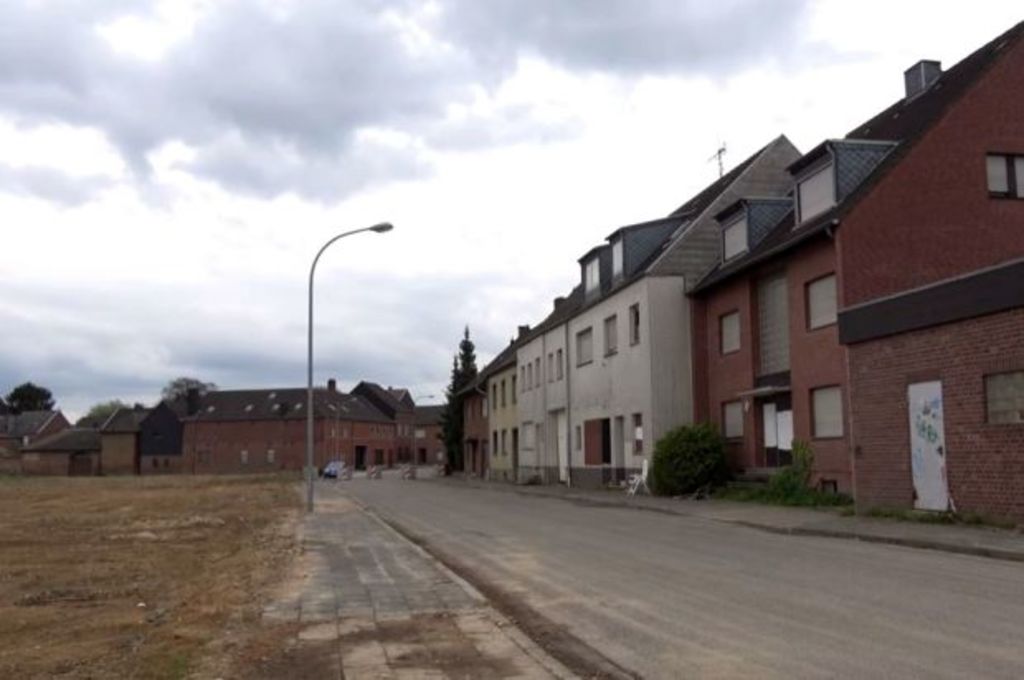In shadow of Germany's climate conference, the village Immerath will make way for a coal mine

The hospital is gone. So are most of the houses, with more being knocked down daily. Not even the bodies remain in the tree-shaded cemetery, where centuries-old bones were recently dug up and moved.
There is far more digging to come – enough to extinguish any trace that Immerath, a once-quaint farming village in the fertile western Germany countryside, ever existed. Because beneath the rich soil lies a substance even more valuable: coal.
The demolition of Immerath – making way for the expansion of mega-mines that will produce billions of tons of carbon emissions in the coming decades and leave a deep gash where villages dating to Roman times once stood – represents the dark underside of Germany’s efforts to address climate change.
The growth of German coal mines at a time when the fuel is being rapidly phased out elsewhere also shows how difficult it can be for countries, even ones that aggressively commit to cleaner technologies, to actually make the switch.
For Germany, the gap between its bright-green rhetoric and coal-smudged reality has never been more vivid.
In the former West German capital of Bonn, the country is hosting a U.N. climate conference this month that is seen as critical to global efforts to fulfil pledges made two years ago in Paris. To slow the climate’s potentially catastrophic warming, experts say the governments represented in Bonn will need to accelerate their embrace of renewable energy.
But just an hour’s drive away is Immerath, which in its dying days has become an emblem of Germany’s struggle to break its heavy addiction to brown coal, the dirtiest of all fossil fuels.
“There’s no bigger impact on the environment than brown coal mining, and we’re the world champion,” said Dirk Jansen, a leader of the local chapter of Friends of the Earth in Germany’s coal heartland of North Rhine-Westphalia. “If we want to stop climate change, we have to start here.”
- Related: Climate change inspections coming?
- Related: Australia’s energy bill trainwreck
- Related: A way of life melting away
The ingredients for that start would seem to exist. Germany is led by Angela Merkel, who is known as the “Climate Chancellor” for her global leadership on the issue even as the Trump-led United States has abandoned it.
After fall elections, Merkel’s conservatives are now negotiating to govern in a coalition with the Greens party, which has long advocated an end to German coal.
Opinion surveys show wide majorities of the German public favour getting out of the coal business, and the government has already committed to largely decarbonising the economy by the middle of the century, with renewables filling the void.
But Germany is also on course to badly miss its emission-reduction targets for 2020. Leading politicians – Merkel included – have staunchly resisted taking steps that activists say could help the country get back on track, including quickly shutting down the dirtiest coal-fired plants and setting a firm deadline for phasing out coal altogether.
The reasons are varied, but they all come down to this: Germany’s ambitious vision for “energiewende,” or energy transformation, has proved far more difficult to execute than it was to plan.
“It’s not just a technical shift. It’s a societal shift,” said Rebecca Bertram, an energy expert with the Greens party-aligned Heinrich Böll Foundation. “There are so many vested interests in keeping the old structures, and people will cling to them as long as they can.”
The Greens are pushing Merkel to agree in coalition talks to an end for German coal by 2030. It’s a deadline, party co-chair Simone Peter said, that would “show Europe, but also the rest of the world, that industrial countries are taking responsibility. We can’t leave that up to developing countries. We have to show that we have better technologies than coal.”
But Bertram said that, given the politics involved, 2030 is looking unlikely. “It would be more realistic to think about 2040 or 2045,” she said.
Pushing the coal phaseout back that far could doom German chances of hitting its ambitious emission-reduction targets not only in 2020 but far beyond. Environmental advocates say it would also mean potentially irreversible damage to the planet at a time when governments such as Germany’s need to be moving faster to pivot to cleaner sources of energy.
But the Greens’ likely coalition partners insist that the country has little choice than to keep burning coal – at least for the immediate future.
Germany is already getting out of the nuclear energy business. Following Japan’s 2011 Fukushima disaster, Merkel decided to close all nuclear plants by 2022.
Simultaneously leaving behind coal, say critics of a quick exit, would leave the country without the necessary resources to ensure it has the energy it needs.
“We don’t want to exit coal energy nationally only to import coal or nuclear-energy from other countries,” said Hermann Otto Solms, point person for the pro-business Free Democrats, the party that is likely to join the Greens and Merkel’s conservatives in the next German government.
Renewables are the future, Solms said. But the country needs to build the networks needed to transport that power.
Right now, much of German renewable capacity is in the north, along the gusty Baltic Sea coast, while Germany’s energy-intensive industries are concentrated in the south.
“If we push renewables, we have to create the infrastructure,” Solms said.
Meanwhile, brown coal is plentiful and cheap.
Germany already plans to get out of hard coal, with the last underground mines closing next year. But brown coal, also known as lignite, is another story.
Mined in giant open pits, it is easier to access but lower quality – and, therefore, dirtier to burn – than hard coal. And in parts of western Germany known as the Rhineland, it’s ubiquitous – the leftover remains of 25-million-year-old swampland.
You don’t have to dig far to find it, and given the low price of carbon under Europe’s emissions trading system, there is little financial cost to burning it.
“There’s no real economic incentive to phase out coal,” said Ottmar Edenhofer, chief economist at the Potsdam Institute for Climate Impact Research. “To stimulate clean innovation, we need a minimum price for CO2.”
Also working in coal’s favor is that the industry employs about 20,000 people, and the energy companies lobby hard to keep German politicians from disrupting their business.
“This is a region where just about everyone depends on the brown coal industry in some way or another,” said Norbert Mattern, a 50-year-old who has been working for the mines since he was an apprentice in high school.
Mattern said he has been listening to politicians talk about shutting down the coal business for years. But, he says, he will probably retire long before that ever happens.
The mining companies, too, see a reasonably long-term future in coal. Rather than scale back as the world turns toward cleaner fuels, they are forging ahead in Germany with ambitious expansion plans.
Among them is the one that will wipe Immerath from the map.
Or, at least, the old Immerath. The owner of the area’s mines, an energy colossus known as RWE, is constructing a new version of the village seven miles up the road.
But the two bear little resemblance to one other. The new one is tidy and austere, with suburban-style housing and a central plaza anchored by a squat, beige, nearly windowless chapel.
It hovers above a sculpted replica of the old Immerath’s soaring, double-spired 19th-century church. The miniature sculpture is a memorial to a building that isn’t gone yet, but will be within weeks.
The rest of the old village will soon follow. Immerath, once home to 1,200 people, is now down to seven families who live in a place that shrinks a little more each day, with streets turning into dead ends and houses falling to demolition crews.
Christiane Portz and her family are among the last to leave.
Her husband’s ancestors have owned property in the village for centuries, and the family farms potatoes there to this day. But the land that they cultivated so faithfully will soon be gone, a void hundreds of feet deep in its place.
Their handsome red-brick house, where brilliant yellow-leafed vines drape gracefully down the walls this autumn, will be gone, too.
Portz, 61, is philosophical about it all, and she said she does not blame the coal company.
“Where’s the energy going to come from?” she asked as she stood in the home’s central courtyard, her grandkids’ toys scattered about. “We’re 7 billion people in this world.”
And besides, she said, their new house isn’t bad. It’s spacious, with plenty of land for horses to graze and potatoes to grow. It will, in some ways, be a lot like their old house, with one key difference.
The roof, she said, will be covered in solar panels.
We recommend
We thought you might like
States
Capital Cities
Capital Cities - Rentals
Popular Areas
Allhomes
More







